
Have you ever wondered if buying local food is a better choice? You’re not alone as more people want to know how and where their food and other products are grown and handled. Local food is also trending in the mainstream of grocers, restaurants, health care facilities and schools. In this article we consider what the term local really means and look at some of the benefits of eating local food.
What does the term ‘local food’ mean?
Most people think that ‘local’ refers to a short geographic distance between where the food was grown and sold. Since the term ‘local’ is largely unregulated and undefined, the area could mean 1 kilometer or 1,000 kilometers away from the point of purchase. Some advocates promote the ‘100-mile (160 km) diet’ as the geographic limit of local, but local food does not have to be such a short a distance. The Canadian Food Inspection Agency (CFIA) says local food claims are valid for food produced within in the province or territory in which it is sold, or if sold across provincial borders it’s within 50 km of the originating province or territory. The best way to find out what local means for a specific product is to ask the food seller – be that a grocery store retailer, the farm stand supplier or restaurant owner. You may get some different answers. How would you define local food? For the purpose of this article, we’ll go with the CFIA term local food, that is grown within your province or territory.
What are the benefits of buying local food?
Local food is fresh and tastes great
Local food is often harvested a few hours before it’s sold so food produced close to home is usually the freshest it can be. Local fruits and vegetables are also harvested close to peak ripeness and flavour. When food is picked and eaten at the peak of freshness, it retains more nutrients and tastes better. Check online what grows in season in your region. You can also eat local food during the winter months because root vegetables, pulses, grains, meats, dairy products are available year-round.
Local food offers seasonal variety
Local farmers may grow a variety of unique foods such as heirloom produce, which you might not find at the grocery store. Look for various types of your favourite vegetables and fruit and try different products. Seasonal eating may mean eating in step with the agricultural harvest calendar and enjoying foods at peak flavour and ripeness. Embracing foods that are in season may also increase the variety of foods you’re eating. Dietitian’s tip: If raw produce is not in season locally then it probably is not locally produced.
Buying local can save money
Food produced close to home is often sold at a good price, and seasonal produce may be sold for even less. For example, if all the farmers have a lot of tomatoes, they may be willing to lower prices to sell them all. Planning meals around what’s in season also helps you save money. Canning or freezing well-priced seasonal vegetables and fruit is a good way to take advantage of lower prices and eating local all year long!
Local food supports communities
Local food creates community and connections. As we emerge from a long, socially isolating pandemic, loneliness is a rising problem. Meeting local growers, discussing foods unique to your region, discovering how your food is grown and harvested counters this trend. Local food is a great experience and offers a place for people to meet each other and build meaningful human connections. Local food can also spark healthy conversations, whether at the farmers’ market, grocery store, local restaurant or farm-to-table gathering with family and friends.
Buying local preserves farms
Choosing local food aids your local economy. It helps keep local producers in business, creates jobs and promotes economic growth. When you buy local food, you are also helping to preserve valuable farmland. This also helps protect green space and habitats for wildlife to exist locally your communities.
Where to find local food in your region?
Farmers market
Farmers markets help meet the growing demand for locally produced food by providing a retail hub intended to sell foods directly by farmers to consumers. They’ve become an important connection between rural and urban communities with benefits that are felt throughout the community. At a farmers’ market you may discover products you can’t find elsewhere such as different variety of vegetables and fruits, unique cheeses, fresh or potted herbs, cut flowers, oven fresh baked goods, meat, fresh fish, poultry, or eggs from nearby producers.
Farmers markets are also a place where you get a chance to directly talk food growers, producers and vendors. Many small farmers are eager to talk about their growing methods and how they care for their animals. Take time to connect with them and discover more about the foods you buy and enjoy.
With more farmers markets opening every year, check online and with your local community associations to find out where they are in your region. In Ontario you can find a farmers’ market at this link Find a Farmers’ Market – Farmers’ Markets Ontario (farmersmarketsontario.com)
Pick your own
Some farmers may invite you to pick your own produce at the farm. By making a trip to a local farm you’re treating yourself to an experience of choosing your food from the field where it’s grown. Pick your own is especially valuable during the peak growing season and harvest times. Check online for local farms that open their gates to pick your own customers. In Ontario you can find an on-farm market or pick-your-own operation near you to purchase Ontario food at this link: Find a Farm – Farm Fresh Association (farmfreshontario.com)
Grocery stores
Some grocers are offering more local food. Many of these foods will be clearly labeled in the store so you know what you’re buying and where it came from. At the grocery store, identify the area of origin for foods you buy and look for ‘local’ when possible.
Restaurants
When dining out, consumers are attracted to local foods especially while on vacation. Check out the menus online and look for menu items with local and seasonal ingredients. Some regions have government co-ordinated ‘eat local’ initiatives that include participating restaurant listings. In Ontario, the Culinary Tourism Alliance created the FeastON Certification. You can find a restaurant serving Ontario food on their menu at this link https://ontarioculinary.com/restaurants/
Community Supported Agriculture (CSA)
CSA provide a way to buy local seasonal vegetables and fruits directly from Farmers – often at a more affordable price. Farmers sell a set of number of shares, or memberships, to customers. The shares usually provide a container of vegetables or other seasonal farm products on a weekly or bi-weekly schedule during the growing season, depending on the growing conditions. CSA’s provide a market for local farmers, and both raw product and a farm connection for consumers. You can find CSA’s near you by visiting your local community centre, municipal office or searching online.
Bottom Line:
Canadians increasingly value supporting a thriving local agricultural system. There are many benefits to exploring local food for individuals and the community. Let’s start a conversation about the benefits of including some local foods in the diet and in menus. Dietitians share credible information and can help find ways to maximize this opportunity and navigate around challenges.
Further Reading and more information:
Written by Lucia Weiler, BSc, RD, PHEc – Award-winning dietitian and Co-Founder, n4nn
Contact us for comments or questions.








 Do you love food and care about how it’s grown, handled and brought to market? We do! As part of staying on top of emerging trends and new research we joined experts in food and nutrition to engage in conversation at the Royal Winter Fair Food and Nutrition Forum. As a Registered Dietitian, Lucia was invited to welcome delegates to a day of learning, getting ‘agricultured’ and celebrating the power of farming, food and nutrition. Inspiring speakers included professors, farmers, authors, dietitians and home economists. Working hand in hand, our passion for wellness and good food united us all!
Do you love food and care about how it’s grown, handled and brought to market? We do! As part of staying on top of emerging trends and new research we joined experts in food and nutrition to engage in conversation at the Royal Winter Fair Food and Nutrition Forum. As a Registered Dietitian, Lucia was invited to welcome delegates to a day of learning, getting ‘agricultured’ and celebrating the power of farming, food and nutrition. Inspiring speakers included professors, farmers, authors, dietitians and home economists. Working hand in hand, our passion for wellness and good food united us all!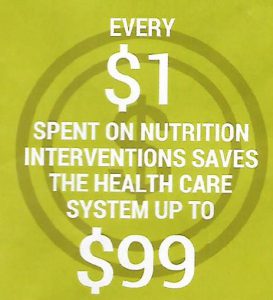



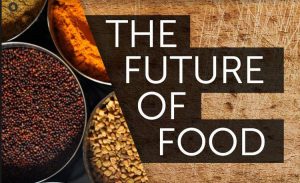

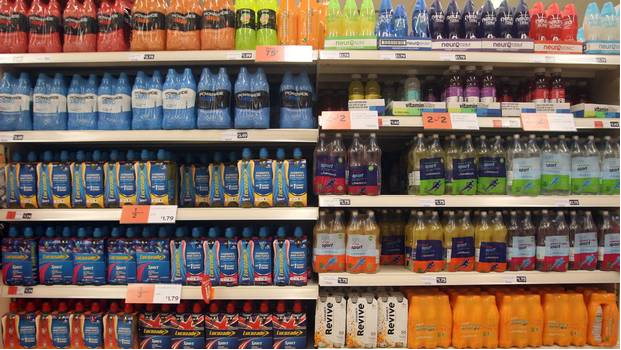



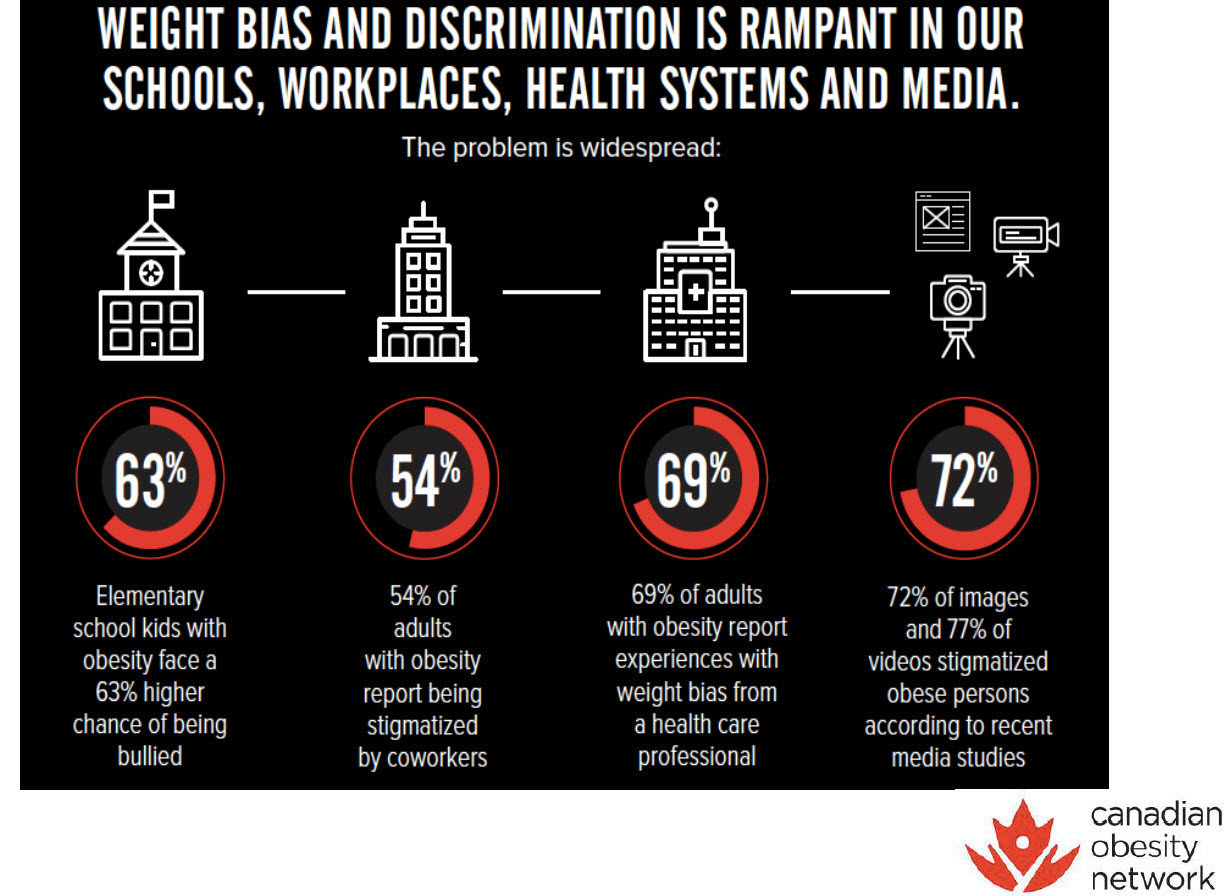
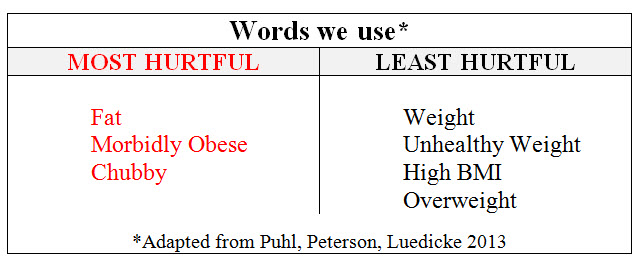


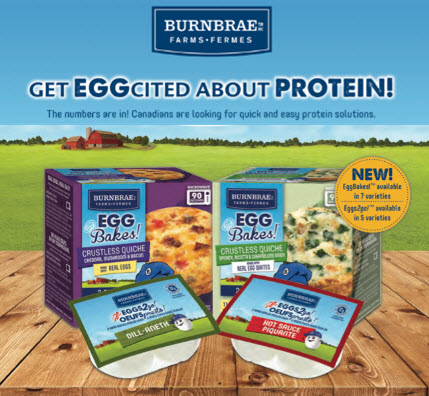

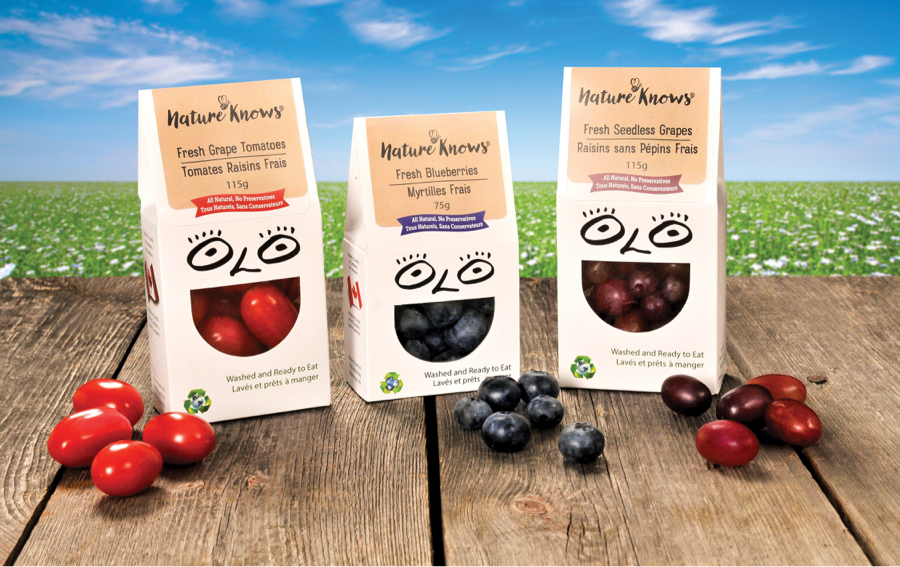





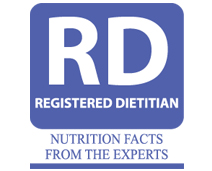
 Alkaline water –naturally alkaline water with a high pH. A 500 mL serving contains: 0 calories, 0 g fat, 4 mg sodium 0 g carbohydrates, 0 g protein, 4% DV for calcium. (Top 10 Most Innovative Products for 2015.)
Alkaline water –naturally alkaline water with a high pH. A 500 mL serving contains: 0 calories, 0 g fat, 4 mg sodium 0 g carbohydrates, 0 g protein, 4% DV for calcium. (Top 10 Most Innovative Products for 2015.)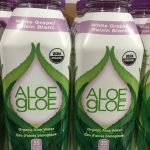 Aloe water – pulp free and sourced in North America. A 450 mL serving contains: 35 calories, o g fat, 0.015 mg sodium, 9 g carbohydrates, 8 g sugars, 0 g protein. (Made with aloe vera inner leaf powder, organic cane sugar, RebA stevia extract.)
Aloe water – pulp free and sourced in North America. A 450 mL serving contains: 35 calories, o g fat, 0.015 mg sodium, 9 g carbohydrates, 8 g sugars, 0 g protein. (Made with aloe vera inner leaf powder, organic cane sugar, RebA stevia extract.) Boxed water – why, because as the package says, “Boxed water is better”. The package tells their story – 78% of the box is composed from trees. No nutrition facts information is shown on the box.
Boxed water – why, because as the package says, “Boxed water is better”. The package tells their story – 78% of the box is composed from trees. No nutrition facts information is shown on the box. Protein2O – a protein enhanced water. A 500 mL serving contains: 70 calories, 0 g fat, 120 mg sodium, 70 mg potassium, 2 g carbohydrates, 0 g sugars, 15 g whey protein. (Made with sucralose.)
Protein2O – a protein enhanced water. A 500 mL serving contains: 70 calories, 0 g fat, 120 mg sodium, 70 mg potassium, 2 g carbohydrates, 0 g sugars, 15 g whey protein. (Made with sucralose.)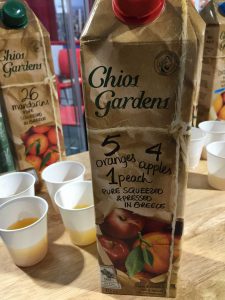
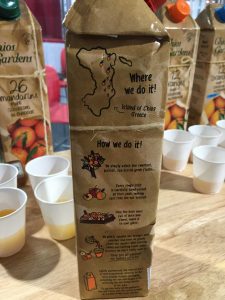
 3. Locally-grown quinoa. Who knew this gluten-free grain could be grown right here in in Ontario? Available in 2016.
3. Locally-grown quinoa. Who knew this gluten-free grain could be grown right here in in Ontario? Available in 2016.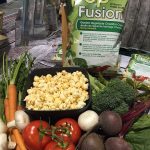 4. Pop Fusion Popcorn. Another local innovation. Popcorn is flavoured with a seasoning blend made from all of the veggies you see in the photo!
4. Pop Fusion Popcorn. Another local innovation. Popcorn is flavoured with a seasoning blend made from all of the veggies you see in the photo! Do you have a good understanding of today’s shopper? At this year’s annual BrandSpark conference, marketing and insight leaders shared these top 7 critical shopper factors.
Do you have a good understanding of today’s shopper? At this year’s annual BrandSpark conference, marketing and insight leaders shared these top 7 critical shopper factors. We never miss attending SIAL Canada – it’s one of North America’s most important food tradeshows of the year. With 800 national and international exhibitors from 45 countries, this year’s SIAL event welcomed more than 13,000 buyers including Canada’s major retailers and purchasers from around the world who are seeking innovative and great tasting foods for their customers.
We never miss attending SIAL Canada – it’s one of North America’s most important food tradeshows of the year. With 800 national and international exhibitors from 45 countries, this year’s SIAL event welcomed more than 13,000 buyers including Canada’s major retailers and purchasers from around the world who are seeking innovative and great tasting foods for their customers.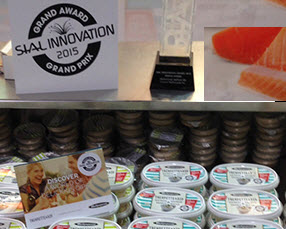 #1 – The winner of SIAL Innovation award went to Malimousse Seafood Dip with Greek Yogurt. The judges liked the dip’s quality, flavour and simple list of ingredients. Right on trend – Congratulations!
#1 – The winner of SIAL Innovation award went to Malimousse Seafood Dip with Greek Yogurt. The judges liked the dip’s quality, flavour and simple list of ingredients. Right on trend – Congratulations!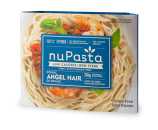 #2 – Nupasta – Konjac Angel Hair is an innovative pasta product that is high in fibre and has 1/10th the calories of regular pasta. Nupasta’s Stephen Cheung tells us that products made from the konjac plant may be new in Canada but are common in Japan. Nupasta is made with konjac root flour and soy flour and is priced like fresh pasta. NuPasta contains 95% water and 5% fibre, yet it tastes great, appears versatile and is ready in 1 minute. This Chinese/Canadian partnership also declares the product as gluten free and non-GMO. Innovation category: component – recipe.
#2 – Nupasta – Konjac Angel Hair is an innovative pasta product that is high in fibre and has 1/10th the calories of regular pasta. Nupasta’s Stephen Cheung tells us that products made from the konjac plant may be new in Canada but are common in Japan. Nupasta is made with konjac root flour and soy flour and is priced like fresh pasta. NuPasta contains 95% water and 5% fibre, yet it tastes great, appears versatile and is ready in 1 minute. This Chinese/Canadian partnership also declares the product as gluten free and non-GMO. Innovation category: component – recipe.

 Camelina Oil – Extracted from the Camelina sativa oilseed, camelina oil is about 90% unsaturated fat, with 39% omega-3 fat and 18% omega-6 fat. The oil boasts light, nutty and earthy notes. With a high smoke point of 475°F, camelina oil is versatile and can be used in salads, dips, dressings and marinades as well as cooking.
Camelina Oil – Extracted from the Camelina sativa oilseed, camelina oil is about 90% unsaturated fat, with 39% omega-3 fat and 18% omega-6 fat. The oil boasts light, nutty and earthy notes. With a high smoke point of 475°F, camelina oil is versatile and can be used in salads, dips, dressings and marinades as well as cooking.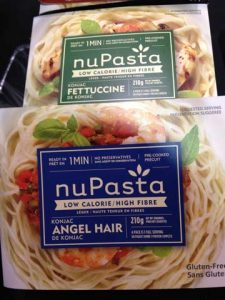 Nu Pasta – This gluten-free pasta is made from the konjac plant. It’s a type of tuber plant, which grows on slopes about 600 to 12,000 m above sea level. The root of the konjac plant is dried and milled into a fine flour which is the main ingredient of the pasta. A 210 g package contains: 25 calories, 1 g fat, 0 mg sodium, 6 g carbohydrates, o g sugar, 6 g fibre, and 1 g sugar. We sampled it in a stir-fry with garlic and pine nuts, which was a nice way to perk up the flavour.
Nu Pasta – This gluten-free pasta is made from the konjac plant. It’s a type of tuber plant, which grows on slopes about 600 to 12,000 m above sea level. The root of the konjac plant is dried and milled into a fine flour which is the main ingredient of the pasta. A 210 g package contains: 25 calories, 1 g fat, 0 mg sodium, 6 g carbohydrates, o g sugar, 6 g fibre, and 1 g sugar. We sampled it in a stir-fry with garlic and pine nuts, which was a nice way to perk up the flavour. Liquid Nitrogen Ice Cream – What do you get when you add milk, cream, sugar and -196°C liquid nitrogen? Ice cream, of course! It’s the coolest and coldest way to make ice cream, and it’s all ready in less than 60 seconds. Liquid nitrogen is simply the harmless nitrogen gas which has been cooled to such a low temperature that it becomes a liquid. We happily sampled the Pumpkin Spice Ice Cream – it was delicious!
Liquid Nitrogen Ice Cream – What do you get when you add milk, cream, sugar and -196°C liquid nitrogen? Ice cream, of course! It’s the coolest and coldest way to make ice cream, and it’s all ready in less than 60 seconds. Liquid nitrogen is simply the harmless nitrogen gas which has been cooled to such a low temperature that it becomes a liquid. We happily sampled the Pumpkin Spice Ice Cream – it was delicious!